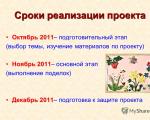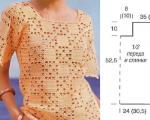How to transfer from a mixture to another mixture. Artificial feeding basics
Not all women are able to breastfeed their babies healthy milk. In force various circumstances There are artificial manufacturers who have to select the best option for baby food - safe and high quality. This is a very responsible task, since in the future the transition to new product will be fraught with a number of difficulties.
This is not a toy: today they gave you a rattle, tomorrow they gave you a bell. Here you need to know all the nuances of how a newborn can switch to another formula without unwanted and even dangerous consequences for his health. In any case, this will become stressful for him, but parents should do everything to minimize it.
Reasons for the transition
Firstly, the mother needs to understand that it is impossible to start feeding the newborn with one formula, and after a while replace it with another just because she suddenly liked it better, because it is now in fashion, or because there was not enough money for the previous one.
The choice from the very beginning must be conscious and competent. After all, this is real stress for small organism and will not pass without a trace for the still unformed stomach.
The younger the baby, the more difficult the transition will be. And it must be dictated by very serious reasons. They could be:
- individual intolerance to milk proteins or sugar;
- lactase deficiency;
- child's refusal to eat;
- poor weight gain;
- most often they switch to a different diet if they have allergies;
- the need for a medicinal mixture;
- planned age transition (this is later - for those who are six months old).
It is best to consult a pediatrician to see if your child can switch to another formula. One thing - medical indications for this, it is completely different - the desire of the parents, dictated by some of their own principles and preferences.
Do not expose your newborn to unnecessary stress: he already has plenty of it. But if this event still cannot be avoided, be sure to follow the rules and recommendations of specialists.
This is interesting. Man is a mammal, that is, he feeds his children with milk. If in nature a female animal for some reason cannot feed the cub, it dies. Until the 19th century, if a woman lost breast milk, a wet nurse was found for the newborn.
Transition rules

There are unshakable rules on how to switch to a different formula for an infant without health consequences. If they are not observed, there is no guarantee that such a transition will not negatively affect his condition.
As side effects There may be constipation and diarrhea, dysbacteriosis and terrible colic, sleep disturbances and loss of appetite. And in the future this threatens serious problems in the functioning of the gastrointestinal tract.
So you shouldn’t risk the health of your newborn - it’s better to follow these tips:
- Consultation with a pediatrician about whether the newborn needs to switch to a new diet.
- If you switch to another formula within the same brand, you don’t have to follow the steps, adding a small amount of new food to 1 feeding. For example, within the Nutrilon 1 brand, mixtures marked Comfort, Fermented Milk, Hypoallergenic, Lactose-Free, Antireflux, Amino Acids, Pepti Allergy, Pepti Gastro and Pre are completely interchangeable.
- You need to switch to another formula from a completely different brand gradually so that the newborn can fully adapt to the change in diet.
- The last thing in the scheme is replaced by night feeding, since it is unknown how the small body will react to the new food.
- A newborn cannot switch to a new formula during vaccination and if he does not feel well: he has a fever, severe colic, bowel problems, insomnia, etc.
- You cannot replace one mixture with another without a good reason.
If you switch to a new mixture correctly, this event will pass without consequences and with minimal stress for the small organism. The rules are not that complicated, everything is doable.
Read also: “How much should a newborn eat at one feeding.”
The only one difficult moment during transition - choosing a scheme to replace one product with another. They can be different, although the principle is the same - gradation.
Through the pages of history. The first infant formula was invented at the beginning of the 19th century, but it was not commercially available. It was produced exclusively for orphanages and orphanages where there were not enough wet nurses for all newborns. It began to be supplied to the market only in the middle of the 20th century.
Transition schemes

There are different schemes, how to switch to a new formula for a baby without consequences for his health.
Some are good because they offer a slow introduction of new nutrition and reduce it to almost zero negative reaction body on it. However, they are not suitable for some newborns, as they cover too long an adjustment period - up to 2-3 weeks, while in case of diarrhea or allergies to the old formula, quicker measures need to be taken.
Other regimens require a 6-day replacement, but do not guarantee the absence of side effects. Choose for yourself according to the situation.
Transition scheme for seven meals a day:
- Add 10 ml of new formula to the first feeding. But at the same time, you cannot mix it in the same bottle with the old food. First - one thing, then - another.
- If nothing has changed in the newborn’s condition during the day (no rashes, fever, diarrhea), the next day add 20 ml of the new product to the first and fifth feedings.
- Add 20 ml of new food daily until the first and fifth feedings are completely replaced.
- After this, with an interval of one day, transfer one feeding completely (not 20 ml) to the new mixture. It is best to do it in order: 1st day - second feeding, 2nd - third, 3rd - fourth, 4th - sixth, 5th - seventh.
However, according to this scheme, the newborn will have to switch to a new formula for quite a long time: up to 2 weeks. In some situations, parents do not have that much time if the baby is allergic to the old food.
In such cases, you can use the express method (with the permission of the pediatrician), reflected in the table:

Exactly the same schemes work for supplementary feeding if the newborn does not have enough mother's milk or he is not gaining weight well.
In any case, it is advisable to consult a pediatrician so as not to encounter unpleasant surprises. Even before the baby is born, parents should consider the option of artificial feeding and choose good mixture, which you won’t have to change to another later.
It's always gradual. The transition to a new mixture should be carried out within 7 to 10 days.
You need to start with 10 milliliters of the new mixture per day. The remaining amount of food, which is calculated individually based on the child’s age, is supplemented with the old formula.
Under no circumstances should you mix new and old mixtures. Mixtures are always given in different bottles.
On the second day, the multiplicity of the new mixture is increased to 2 - 3 times 10 milliliters, and the rest of the feedings are continued with the old mixture. In parallel with the introduction of a new formula, they monitor the baby’s condition, how he behaves after feeding and whether he sleeps well. Pay attention to skin child, is there any redness or rash. Also special attention give stool - it should not be foamy or watery.
On the third day, the amount of the new mixture is increased to 20 milliliters three times a day. So, the volume of the new mixture on the third day should be 60 milliliters.
On the fourth day, the amount of the mixture is increased to 4 times a day, 30 - 50 milliliters.
On the fifth day, the volume of the mixture doubles, that is, from 60 to 100 milliliters four times a day. This means that on day 5 of switching to a new formula, the volume should be 400 milliliters, approximately half of the baby’s daily diet.
On the seventh day, you can completely replace the child’s diet with a new formula.
The amount of formula per day is most often calculated taking into account the weight of the child. In the first two months, the daily ration is one fifth of the child’s weight. If the child weighs 4 kilograms, then the volume of the mixture will be 800 milliliters. This volume is divided by the frequency of feedings ( 6 – 7 times), and it turns out that for one feeding the child should receive 130 - 115 milliliters of mixture.
Here is an example of introducing a new mixture for two month old baby weighing 4 kilograms, initially calculating that he should receive 800 milliliters of the mixture per day. The volume of the daily ration is divided by the frequency of feedings. For a two-month-old baby, the frequency of feedings should be 6–7 times a day, that is, 115 milliliters per feeding.
- 1st day: the volume of the new mixture is 10 milliliters, the old mixture is 790 milliliters;
- 2nd day: the volume of the new mixture is 30 milliliters, the previous mixture is 770 milliliters;
- 3rd day: the volume of the new mixture is 60 milliliters, the old one is 740 milliliters;
- 4th day: the volume of the new mixture is 200 milliliters, the old mixture is 600 milliliters;
- 5th day: the new mixture is 400 milliliters, the old one is 400 milliliters. This means that by the fifth day the volume of the old and new mixture should be equal;
- 6th day: new mixture – 600 milliliters, old – 200 milliliters;
- 7th day: The new mixture can replace the baby’s entire diet, that is, all 800 milliliters, 115 milliliters 7 times a day.
Such a transition to a new mixture is not typical for everyone medicinal mixtures. Under certain genetic diseases the transfer is carried out immediately. For example, for phenylketonuria, mixtures that do not contain phenylalanine are introduced into the diet almost immediately. Feeding previous formulas containing phenylalanine is not allowed, as this can lead to serious complications.
The situation is similar with lactose-free formulas. In case of primary lactase deficiency, when the lactase enzyme is completely absent in the child’s body, feeding with other formulas is unacceptable. In case of secondary lactase deficiency, the new mixture is introduced gradually, in parallel with the old mixture.
Both the new and previous mixtures should be diluted immediately before meals, each mixture in an individual bottle. It is advisable to introduce a new mixture in the first half of the day, and continue to feed the same mixture in the evening. The doctor recommends replacing with some mixtures not the entire diet, but one third or half of it. For example, this applies fermented milk mixtures. They should not replace the entire diet, otherwise it will lead to increased
Breastfeeding is important for the health and development of children, because along with the product of lactation, maternal antibodies, beneficial bacteria and enzymes enter the baby’s body, helping to improve the functioning of the baby. digestive system. In addition, by slightly changing her diet, a nursing mother can adjust the functioning of the baby’s intestines - “fix” it or, conversely, “loosen” it.
Artificial babies receiving formula are deprived of all this. If there are persistent problems with the baby’s digestion or health, the pediatrician may recommend changing the product and even recommend a specific manufacturer.
When does the mixture need to be changed?
If an artificial baby feels good eating the formula that they started feeding him in the maternity hospital, then there is no need to change it for no reason. The baby’s intestines get used to a specific product, which it has already learned to digest and assimilate, and changing the diet can harm its functionality, which will lead to intestinal disorders.
If you decide to switch to another formula because it is inexpensive compared to what you are giving your newborn now, you should definitely ask your pediatrician for his opinion on this matter. Over many years of working with infants, a pediatric specialist has probably accumulated enough practical knowledge about the reactions of babies to products from different manufacturers. The doctor will help you choose ideal option, which will suit the baby’s body and will be affordable for you.
- with prolonged disturbances in the baby's stool;
- with the development of anemia;
- during manifestations allergic reactions on the product used;
- with excessive regurgitation of the baby;
- with regular bloating.
Manufacturers are ready to meet the needs of every artificial baby. So, if the baby suffers from profuse regurgitation, you can solve this problem by switching him to a special anti-reflux product containing gum, which effectively thickens the stomach contents. For children with lactose intolerance, powders have been created without its presence in the composition, and if you are allergic to animal protein, you can purchase food for your child with soy or hydrolyzed protein, which will not cause such a reaction in him.
If anemia is detected in a child, the pediatrician will decide to temporarily switch him to iron-fortified powder. But the most common problem, because of which doctors recommend changing food products, is dysbiosis. Artificial animals have nowhere to get lacto- and bifidobacteria, so they are either additionally given special preparations that populate the microflora, or are switched to a mixture with probiotics.
In any case, you need to change your child’s formula strictly after agreeing on your decision with your pediatrician.
How to change the mixture correctly?
- It is impossible to change the mixture suddenly, as this will lead to disruptions in intestinal function. An unsmooth transition to a new product can cause severe diarrhea, the consequences of which can be dysbacteriosis and dehydration.
- Rules smooth transition apply not only to products of different brands. Even if you change the same type of mixture, but intended for different ages, you should still do it gradually over 1-2 weeks.
- If you change food “according to age,” then the powder can be mixed in one bottle, but if the brands of the product are different, you should dilute them in separate containers and give the baby one feeding at a time, first the new one, and then the old one.
- When switching to another formula “according to age,” you need to gradually increase the volume of the new product, every 2-3 days replacing a spoonful of the previous food with a new one.
So, if you eat 180 ml. nutrition, the transition to a new product will look like this:
- 1-2 days— 1 spoon of new powder + 5 spoons of old;
- 3-4 day— 2 spoons of new powder + 4 spoons of old;
- 4-6 day— 3 spoons of new powder + 3 spoons of old;
- 7-8 day— 4 spoons of new powder + 2 spoons of old;
- 9-10 day— 5 spoons of new powder + 1 spoon of old;
- 11-12 day
Changing mixtures of different brands occurs according to the same scheme - every two days you should increase the volume of the new powder in one of the bottles by 30 ml, and in the container with the old one, reduce it accordingly:
- 1-2 days— 30ml water +1 l. new powder/150 ml. water +5 l. former;
- 3-4 day— 60ml water +2 l. new powder/120 ml. water +4 l. former;
- 4-6 day— 90ml water +3 l. new powder/90 ml. water +3 l. former;
- 7-8 day— 120ml water +4 l. new powder/60 ml. water +2 l. former;
- 9-10 day— 160ml water +5 l. new powder/30 ml. water +1 l. former;
- 11-12 day— complete transition to a new mixture.
The child should first be given a bottle with a new formula, and then fed from a container with the same product.
If you see that the child tolerates the food replacement normally, you can speed up the schedule a little by introducing 30 ml into his diet every day. new product, and reducing the same volume of the previous one.
What difficulties might you encounter?
The scheme for introducing a new food is “stretched” over such a long period of time that the baby’s intestines can adapt and begin to digest and assimilate a different product than he is used to. But even with such reasonable caution, the baby’s body will still begin to react negatively. In the first 3-4 days you can notice in your child:
- Constipation.
- Diarrhea.
- Rapid swelling and colic.
- Minor skin rashes.
If after 3-4 days these signs do not go away or intensify, and the baby constantly screams, contact your pediatrician - perhaps the chosen mixture is not suitable for the baby, and you will have to try another one, introducing it into the child’s diet according to the previous scheme.
- Keep a feeding diary in which you will record the amount your baby eats and his reaction to the formula. This will make it easier for both you and the pediatrician to understand whether the new product is suitable for your baby.
- Dilute the powder strictly in the proportion indicated by the manufacturer on the packaging. If it seems to you that the baby is not getting enough, prepare 30 ml more artificial milk. Under no circumstances should you add more powder to the volume of water in violation of the instructions.
- The period of changing baby formula is very difficult for the baby’s digestive system; he will almost certainly suffer from colic, so give your baby a belly massage more often, hold him close to you, warming him with the warmth of your body, to reduce pain.
Very often, pediatricians even in the maternity hospital prescribe a formula for supplementary feeding of the baby. But at home, often unnecessarily, parents decide to choose a different formula without consulting a doctor. As a result of such arbitrariness on the part of parents two week old baby may try several mixtures. And this is not at all correct. The child's body is still too weak to cope with such a load. In this article we will tell you how to properly introduce another formula without harm to the baby.
Take your time!It should be noted that the adaptation of the child’s digestive system to the new formula may take 1-2 weeks, and during this time there may be changes in the child’s stool, the appetite with which he eats, and his mood may worsen. If, when switching to a new formula, the child’s stool changes, this is not a reason to cancel it. It may take several weeks before you find out if the formula is really not right for your baby. However, if a child develops a rash, he should be immediately shown to a pediatrician. In this case, you will probably really have to refuse to switch to a new mixture.
When switching to a different formula, it is very important to know how to properly introduce the new formula.
Scheme for switching to another mixture
It is necessary to switch from one mixture to another gradually, over several days.
On the first day, give 30-40 ml of the new mixture, the rest of the volume should be the old mixture. On the second and subsequent days, the volume of the new mixture should be increased by 10-20 ml.
For example, a child should receive 120 ml of formula per feeding and we switch from Friso formula to Nutrilon formula.
On the first day, give 40 ml of Nutrilon mixture, 80 ml of Friso.
On the second day, 60 ml of Nutrilon mixture, 60 ml of Friso mixture.
On the third day, 80 ml of Nutrilon mixture, 40 ml of Friso mixture.
On the fourth day, 100 ml of Nutrilon mixture, 20 ml of Friso mixture.
On the fifth day, the child should receive all 120 ml of the Nutrilon mixture.
The following also applies to the rules for switching to another mixture. The new and old mixture must be given from different bottles; you cannot mix different mixtures, even from the same brand.
An exception to the rule of gradual introduction of complementary foods is the prescription of a hypoallergenic formula to a child. IN in this case shown abrupt transition to another mixture, one day in advance.



